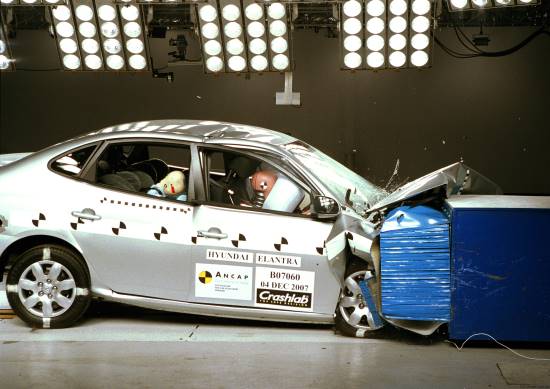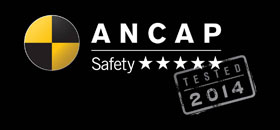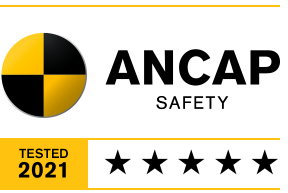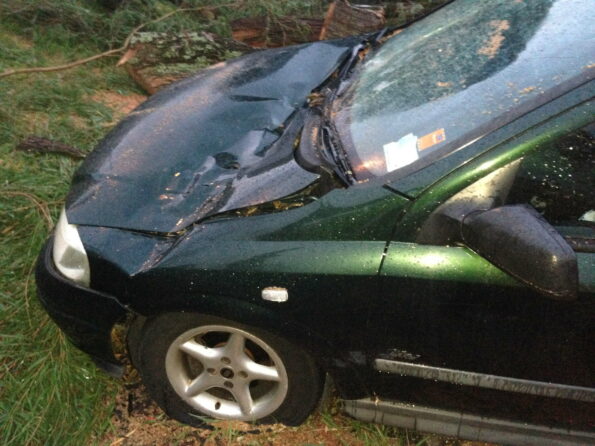
ANCAP is the Australasian New Car Assessment Program. It’s a crash testing program similar to Euro NCAP in Europe and JNCAP in Japan which measures how well a car (which includes SUVs) protects its occupants and pedestrians in a crash. ANCAP does not test motorbikes or commercial vehicles.
If you are buying a car many of the cars on sale here will have been tested by ANCAP, but not all. As crash testing is expensive, manufacturers don’t always test every model with each of the crash testing agencies. If there’s no rating for a car you are thinking of buying, check Euro NCAP or JNCAP as the ratings are comparable (although not exactly the same because in JNCAP there are different tests at different speeds). JNCAP primarily tests Japanese cars and you will not find many European cars on its website.
What you need to know when buying a car
Bearing in mind the car should be suitable for your needs, choose the highest star rating on the latest vehicle you can, but don’t just assume that because a vehicle has a high star rating that it will be safest. You’re roughly twice as likely to die in an accident in a vehicle with one star than a vehicle with five stars and, of course, you are likely to be more severely injured in any type of crash.
Cars can also be as safe as large SUVs therefore you don’t need to get a large, unwieldy, thirsty SUV if you don’t actually need one. However, ANCAP results cannot be compared across vehicle classes; the simple laws of physics state that a large SUV will have a better chance than a small hatchback in a frontal offset collision, but this doesn’t necessarily hold true for side impact and pole impact tests (see below).
The rating describes the occupant protection and considers potential injuries to your head, neck, chest, abdomen, pelvis, and upper and lower legs.
Do dealers have to show ANCAP ratings when they sell a car?
Dealers do not currently have to show safety ratings on cars for sale. However, the RAC has been working with vehicle dealers and since mid-2014 ANCAP ratings have been displayed at vehicle dealerships.
Watch for dealers providing results for cars with good crash test ratings, but failing to display them for cars with bad crash test ratings.
ANCAP ratings stamp

ANCAP ratings from July 2014 feature a date stamp showing the year issued, and the number of stars the vehicle received. This is because ratings criteria change over time and a vehicle that achieved a 5-star rating in 2006 is unlikely to be as sturdy and provide as much protection as a vehicle receiving a 5-star rating in 2014, and a rating received in 2014 won’t be as good as one received in 2021.

Additionally, new features such as electronic stability control, over time become mandatory to achieve a 5-star rating. ESC was not mandatory in 2006, and therefore vehicles without ESC that received a 5-star rating then wouldn’t receive a 5-star rating now. The system had a major overhaul in 2018 when several new tests were introduced, including collision avoidance technologies, and the test protocols were harmonised with EuroNCAP. In 2020, the crash speed was increased, automatic emergency steering and driver monitoring was introduced, and there was the introduction of a new dummy.
“As the ANCAP test programme moves in-line with the rapid progression of vehicle safety design and technologies, the introduction of date stamping to ANCAP ratings is the next step in clearly communicating the differences in a car rated today, compared with a car rated in forthcoming years,” said ANCAP chairman Lauchlan McIntosh.
How are the tests conducted
ANCAP has an excellent YouTube channel, and you can see videos like this one which shows why you don’t want to buy a Chery J1:
Each vehicle model is put through four different tests.
Frontal offset
This test simulates colliding with another car of about the same mass travelling at the same speed (32kph), for example if a car drifts over the centre line and half of the front of it hits half of the front of the other car. Front airbags are important to protect occupants in these types of crashes.
Side impact
The side impact test simulates one vehicle running into the side of another vehicle, for example, a car pulls out from a side street in front of another car. Curtain airbags are important to protect occupants in these crashes.
Pedestrian test
The pedestrian test simulates a car hitting a pedestrian – these accidents represent approximately 15% of crashes in Australia and New Zealand. This test measures how effectively the vehicle cushions the impact. Pedestrian impacts are more likely to occur in areas where there are more pedestrians, and these tend to be urban areas where speeds are lower. Choosing a car with automatic braking technology such as Volvo’s City Safety or Subaru’s EyeSight will dramatically reduce your risk of killing a pedestrian because the car will brake before you have time to react, leading to a lower impact speed. Remember that aftermarket bull bars can significantly increase the risk to pedestrians.
Pole test
The pole test simulates an accident where the car slides sideways into a fixed narrow object such as a streetlight, pole or tree. Curtain airbags are the most effective at preventing injury in these crashes, and they also protect the car’s occupants against the broken glass.
What doesn’t the ANCAP test cover?
ANCAP does not perform crash tests from the rear as these rarely result in fatalities (if they do, it’s usually because it was a much bigger vehicle that ran into the back of a much smaller vehicle). There is a discussion underway to measure whiplash ratings based on tests of vehicle seats. Most new cars come with whiplash-reducing headrests. JNCAP runs a test for this.
The crash speed is simulated at 64kph for the frontal offset. Real world data from the US shows that more than half of all fatalities to seatbelt-wearing drivers occur at impact speeds under 55kph. However, the crash test doesn’t account for two cars colliding head on doing 90kph each.
When buying your car
If this is your first car then you’ll need to know what basic maintenance to carry out – we’ve prepared this useful guide – and how to look after your tyres.
You should always get a vehicle history check done on a car (or ask the dealer to supply one) and, if a car is older, you should consider getting a mechanical check.
You will also need to get a car insurance quote. Insurance will ensure that if you suffer any loss that you are either partly or fully covered, depending on the policy you choose, who is at fault and the circumstances of the claim.
An insurance policy is a fee you pay on a yearly basis to give yourself some cover should you suffer loss through fire, theft, a crash or accident, or a random event such as a tree falling on your car.

Insurance policies don’t take into account ANCAP crash test results. The test results do influence how much damage your car and its occupants are likely to sustain in a crash. Many cars are written off in an accident because they are uneconomical to fix, even if those cars are supercars worth hundreds of thousands of dollars. Insurance will pay out the agreed value of the car, minus any valid deductions. Note that if the loss you suffer is the result of committing a crime, such as driving outside the conditions of your licence, your insurance company may not pay out.
